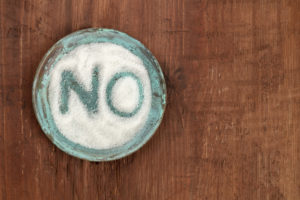
Let’s face it—the stuff tastes good. It might make virtually everything you enjoy taste a little better. That’s the whole point of it. It’s why it’s so hard to stop eating sugar.
Sugar was supposed to be a treat—something you’d consume on occasion in a piece of cake, a small sweet, or added to a tea or coffee.
But now, sugar is everywhere, and it’s addictive. It’s added to yogurt, sauces, condiments, drinks, and more. Even if you’re trying to eat healthily, you could be getting far more sugar than you think.
According to the American Heart Association, the daily recommended maximum intake for added sugar is 6–9 teaspoons. The average American gets about 19. At that level, sugar can become toxic.
Because it is so prevalent in the Standard American Diet and is lurking nearly everywhere, it takes a concerted effort to eat less. But when you scale back on sugar, good things happen. Things like:
- Taste recalibration (you’ll be able to taste natural sweetness a lot more. Foods like apples, berries, and more will register and satisfy cravings for sweets).
- Weight loss. Added sugars supply a ton of calories. Eating less will almost inevitably lead to reduced caloric consumption.
- Lower risk for heart disease. Sugar intake is closely related to systemic inflammation and heart disease.
- Reduced blood sugar, increased insulin sensitivity, and a lower risk for metabolic disease, type-2 diabetes, and liver damage.
The key to eating less sugar is to take a slow and steady approach. Removing a little bit each day is more likely to lead to long term adherence and result in the long-term benefits of a reduced-sugar diet.
Start by tracking what you eat over the next few days. Don’t make any changes to how you’ve been eating—write down your food choices, how much sugar is in each, and find out your average daily intake.
When you’ve done that, look for areas to cut it out. Some easy targets include:
- Putting half the amount of sugar in your tea/coffee
- Opt for plain yogurt instead of flavored
- Cut one sugary soda/beverage from your day
- Switch from sugary sauces and condiments to seasonings and spices that are sugar-free
Removing sugar slowly allows your taste buds to adjust and your body to avoid going into a crash state. Going cold turkey off sugar can lead to feelings of discomfort and withdrawal. Over a few weeks, make steady progress on your cutbacks until you’re consuming a safe and reasonable amount of sugar.